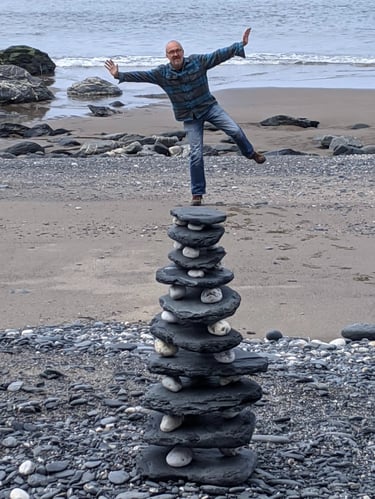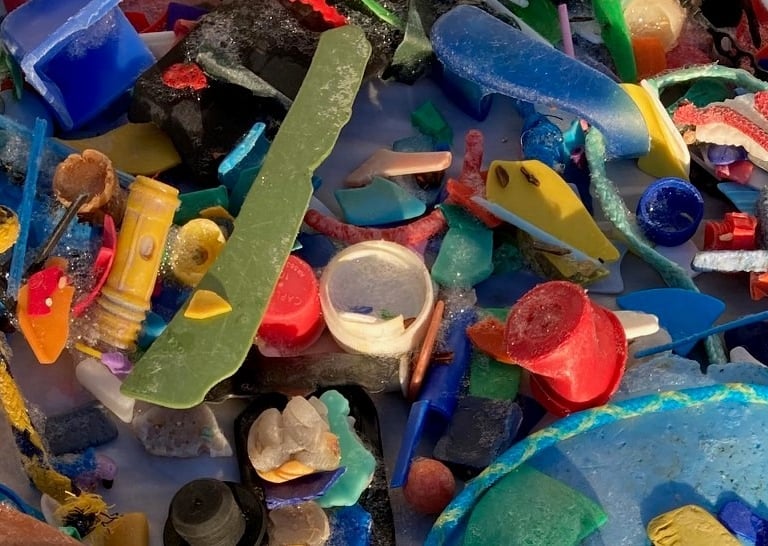

Philosophy and Influences
Armed with a degree in environmental planning, John spent much of his working life as a town planner, working across the public, private and community sectors. Some might say that town planning is akin to making order out of chaos, and this is certainly something that can be ascribed to John’s artistic creations. Looking for patterns and relationships in otherwise dysfunctional items. Making beauty out of ugliness. But there is a clear message. We are ruining our planet with our throw away culture.
Method and Materials
Humans are producing an ever-increasing quantity of plastic. Plastic uses oil as its key ingredient – a fossil fuel, and a major contributor to climate change. And if that wasn’t bad enough, a vast proportion of all plastic consumed is single use, ending up as litter or pollution on land and sea. Ocean plastic is not only a threat to wildlife, and ultimately to us through the food chain, it also creates an eyesore in some of our most beautiful places. By 2050 it is estimated that there will be more plastic than fish in our oceans.
Plastic that is washed up on the beaches of south-west England is John’s raw material. Much of it has been in the ocean for months if not years, possibly decades. Tides, salt, and weather have all helped to erode and break up the fragments, creating interesting shapes and textures, giving them fascinating qualities. With inspiration from the ocean and coastline itself, John reassembles them to create patterns of colour, shape, and texture. Sometimes the pieces tell him how they should best be combined and placed together. And sometimes there is a pattern in nature or a mathematical arrangement that speaks first, to be brought to life through this most versatile of materials. But always with a clear environmental message.




